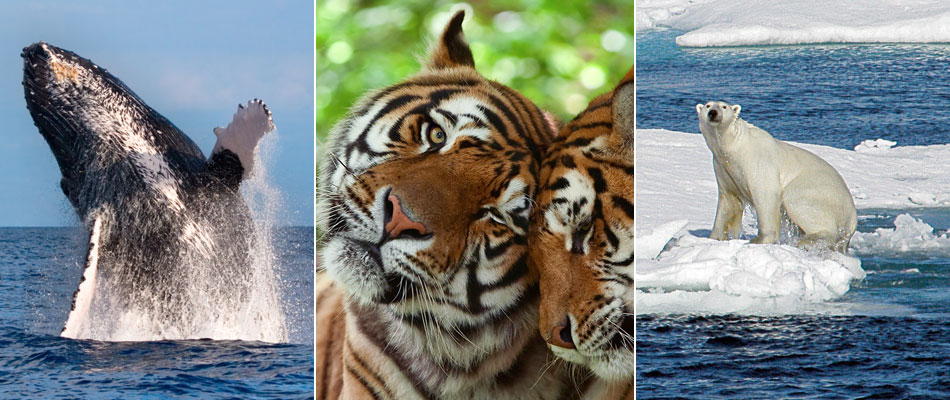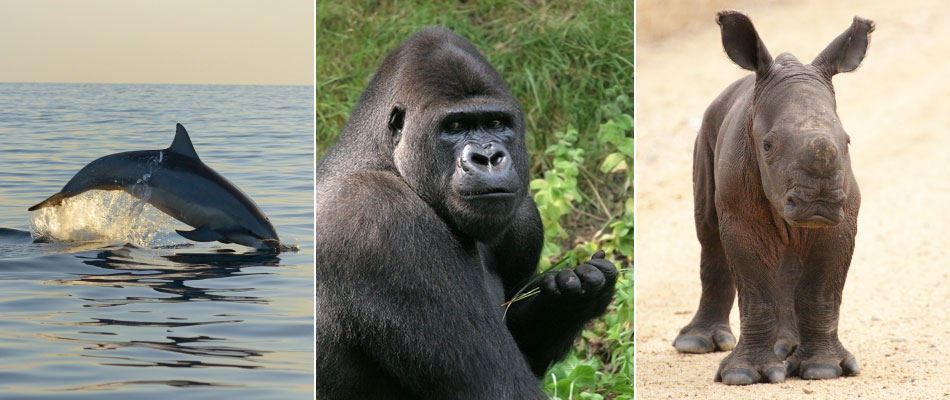Wildlife conservation: Can wildlife tourism help conserve our endangered species?

Wildlife watching vacations often focus on iconic species such as whales, tigers and polar bears, many of which are the most threatened. So can wildlife tourism help conserve endangered species?
Some people believe these animals should be kept away from tourists, and others even believe that they should be removed from the wild to be kept in captivity as a ‘reserve’ population to prevent extinction. However, this is preservation rather than conservation, and it treats the symptoms – it’s not a cure. Conservation is about more than saving animals; it involves maintaining habitats and changing mindsets. Wildlife is endangered by the actions of people, from deforestation to pollution and hunting.
Responsible wildlife tourism has an important role to play in stopping these detrimental activities by encouraging people to relish rather than ravage the natural environment. By making animals more valuable alive than dead, it is possible to encourage both poachers and governments to refrain from killing and to seek out alternative ways to profit from them. Rather than trying to enforce conservation efforts at an international level, the use of tourism to change views at a local level can be far more powerful. By viewing animals as a valuable commodity and a key component in the tourism industry, rather than a pest, inconvenience or foodstuff, it is more likely that conservation initiatives will be successful, ensuring that future generations can visit, watch and enjoy these wonderful creatures.
Tiger safaris
One of the highlights of a vacation in India or Nepal can be witnessing the majestic yet highly endangered tiger in its native habitat. Unfortunately, the poaching of tigers continues not only for bones for Chinese medicine but for skins for fashion in Tibet and China.The only way to protect tigers is through official legislation and better policing, which many charities lobby for. But through well-managed tiger tourism, the countries that are home to these beautiful animals can benefit from the financial boost to their economies and realise that protecting tigers isn’t just good for their image but also good for their pockets. Increasing numbers of tourists will also raise awareness of the plight of the tiger and help increase publicity for the campaigners.
Read our views on responsible tiger watching vacations
Whale watching
Whale watching is a rapidly growing industry and is incredibly widespread – whales migrate all over the world. Sadly, whaling (albeit under the guise of scientific purposes) is still carried out in Japan, Norway and Iceland, and in 2019 Japan resumed commercial whaling. In response to this, conservation organisations have appealed for signatures to petition the governments of these countries until they cease whaling.Another way to oppose whaling is to book a whale watching tour in countries that continue to hunt whales, thus demonstrating to the authorities that whale watching is a far more reliable and sustainable addition to the economy than whaling. And of course, never eat whale meat – still a popular delicacy in Norway. Whales are definitely worth more alive than dead!
Read more about responsible whale watching vacations.
Dolphin watching
Watching and swimming with dolphins is increasingly popular and many countries have established codes of conduct to protect dolphins from excessive visitor numbers and being chased by boats. However, many species of dolphins are still at risk.The baiji, also known as the Yangtze river dolphin, was traditionally venerated by local people, but as China rapidly industrialised it became a victim of hunting as well as irresponsible fishing techniques and habitat loss. Today, it is believed to be extinct. Perhaps if China had an established dolphin watching industry and more value had been placed on the conservation of these unusual creatures, things could be very different today.
Happily, the value of wildlife tourism has already been recognised in the Amazon, where the number of tourists traveling to see the unusual pink river dolphins will hopefully save them from the same fate.
See our guide to responsible dolphin vacations
Gorilla tracking
The survival of the mountain gorilla is one of wildlife tourism’s greatest success stories. Living only in the forests where Uganda, Rwanda and the Democratic Republic of the Congo meet, mountain gorillas have never successfully been kept in captivity, and the preservation of their natural habitat is essential to ensure their survival. As their numbers dwindled due to habitat loss, hunting and human-wildlife conflict with the neighbouring farmers, national parks were created to protect the forests, gorilla families were habituated by scientists and gorilla tourism began.Gorilla tracking is highly regulated in all three countries; only eight tourists may visit each gorilla family per day, spending a maximum of one hour with the creatures. There are many established rules (no food or drink, keeping at least 7m from the gorillas) which aim to cause the gorillas as little distress as possible – and to reduce the risks of disease transmission. Today, mountain gorilla numbers are on the rise – over 1,000 now live on the slopes of the extinct volcanoes.
Read more about responsible gorilla watching vacations

Other endangered species
There are many other high profile threatened creatures whose fate is now inextricably linked to tourism – from rhinos and sea turtles to polar bears and orangutans. Just as each animal is unique, the threats facing them, too, vary widely: poaching, habitat loss, climate change, light pollution, litter, human wildlife conflict, sand mining, egg collection.
The opportunities for tourists to see them in the wild are equally as diverse. Rhinos can be tracked on foot; part of the tour fee goes to funding rangers and surveillance systems to keep them safe. You can also get involved by microchipping a rhino as part of ongoing monitoring projects. Polar bears can be seen during Arctic cruises – funds are donated to raising awareness about climate change. Sea turtles can be tracked in the company of local organisations that carry out beach patrols and protect nests – as well as carrying out workshops with the local communities to raise awareness of the need to protect the turtles. Volunteers can also monitor the turtles, patrol the beaches and even release the tiny hatchlings. And orangutans can be seen during tours to Borneo, where you can track them in the wild, visit a rehabilitation center and take part in a tree planting project which aims to increase their dwindling habitat.
Further reading
- See all of our wildlife vacations.
- Take an extra step and book a wildlife conservation vacation.
- Read more about our stance on wildlife.
- Read our stance on keeping animals in captivity.




